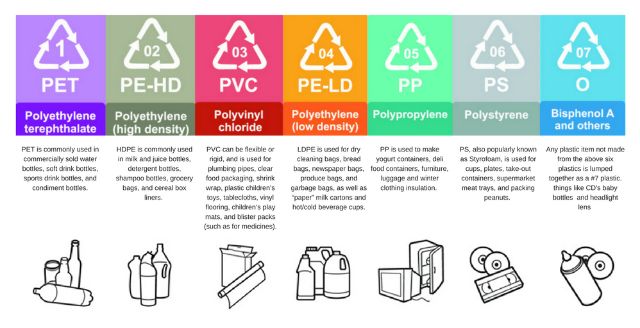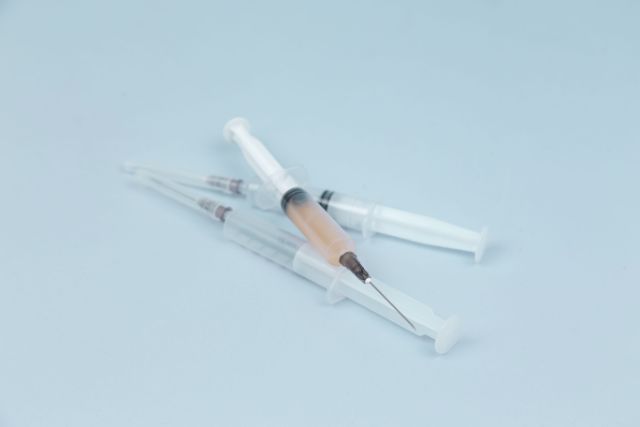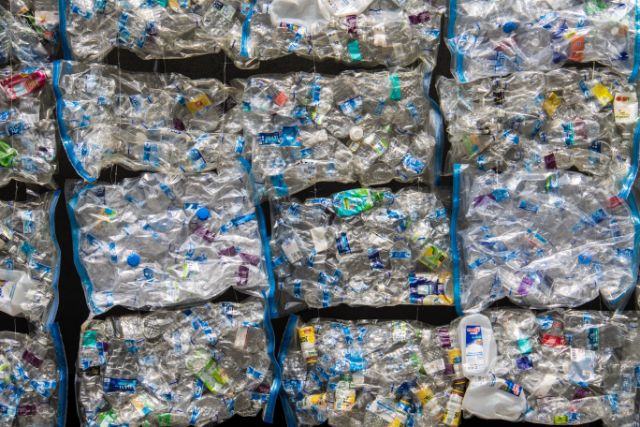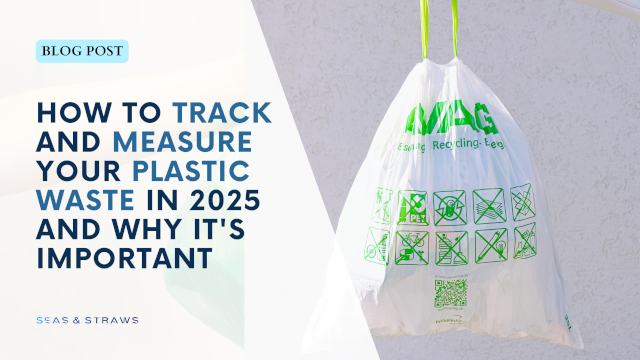- Home
- The Problem with Plastic
- Reduce Plastic Consumption
Urgent Action Required - We Must Reduce Plastic Consumption Now Before It's Too Late (Part 1/2)
Plastic has become an inseparable part of our daily existence, and it's hard to imagine a world without it. From food packaging to household items, plastic has made our lives more convenient and comfortable. However, it's essential to recognize the environmental impact of our plastic consumption and take necessary steps to reduce it.
Let's delve into the world of plastics in this two-part blog post. In this first part, we'll explore the different types of plastics, their common uses, and the environmental impact they pose.
What are Plastics?
Plastics are synthetic materials composed of polymers, which are large molecules made up of repeating units called monomers. They are versatile and easily shaped into different forms while retaining their properties.
 Plastic is useful and dangerous - and it's everywhere.
Plastic is useful and dangerous - and it's everywhere.Types of Plastics
 Plastic recycling codes only specify which plastic resins are used in the production process.
Plastic recycling codes only specify which plastic resins are used in the production process.Plastics are categorized into different types based on their chemical structure and properties.
The most common types include:
- Low-density polyethylene (LDPE): LDPE is a type of plastic that is commonly used in plastic bags, cling wraps, and squeeze bottles. It is a flexible material that is made from the polymerization of ethylene gas. LDPE has a low density because its molecules are loosely packed together.
- High-density polyethylene (HDPE): HDPE is a type of plastic that is more rigid than LDPE. It is commonly used in milk jugs, detergent bottles, and pipes. HDPE is also resistant to chemicals and moisture, making it a good choice for food and beverage packaging.
- Polypropylene (PP): Polypropylene is recognized for its heat, chemical, and fatigue resistance. It's used in packaging, automotive parts, textiles, and medical devices, favored for mechanical strength and durability. PP is recyclable and increasingly integrated into recycling efforts.
- Polyvinyl Chloride (PVC): PVC is versatile and durable. It's used in pipes, window frames, vinyl records, and clothing due to moisture and chemical resistance. Production releases toxic chlorine gas, and incineration can emit harmful dioxins.
- Polystyrene (PS): Polystyrene is a lightweight plastic that can be found in two main forms: solid (used in products like disposable cutlery) and expanded (commonly known as Styrofoam, used in packaging and insulation). The foam has excellent insulation but is difficult to recycle due to its low density and fragility.
- Polyethylene Terephthalate (PET): PET is widely recognized for its clarity, strength, and recyclability. It's commonly used in beverage bottles, food containers, and clothing fibers.
- Others: This category is a catch-all category for plastics that do not fit into the other six categories. These plastics are often not recyclable because they are made from a variety of different materials, or because they contain additives that make them difficult to recycle. Examples of such plastics include eyeglasses, CD/DVDs, and clear plastic cutlery.
Common Uses of Plastics
Plastics are used in a wide range of applications due to their lightweight nature, durability, and resistance to corrosion, chemicals, and electricity.
They are incredibly versatile and find applications in numerous industries:
- Packaging: Plastic packaging protects goods from moisture, contaminants, and damage and helps reduce food waste. It includes bags, shrink wrap, and containers and aids efficient transportation.

- Consumer Goods: Plastics are used in electronics, clothing, kitchen utensils, and appliances for their durability and flexibility.
- Medical Field: Plastics are widely used in medical devices for their biocompatibility, sterilization compatibility, and ease of manufacturing. Examples include syringes, IV tubing, prosthetics, surgical instruments, and diagnostic equipment.
 Plastic is essential in hospitals and practices.
Plastic is essential in hospitals and practices.- Transportation: Plastics are used in car components like bumpers, interiors, dashboards, and seat covers. In aircraft, plastics aid weight reduction, optimizing fuel consumption and flight performance.
- Construction: Plastics are widely used in construction for their lightweight and cost-effective properties. PVC pipes are used for plumbing because of their corrosion resistance. Polyurethane and polystyrene are used for insulation, while vinyl siding is a low-maintenance option for exterior cladding.
The Negative Impact of Plastics on the Environment
The negative consequences of plastic waste on our planet are undeniable. While they offer certain benefits, their environmental impact cannot be ignored:
1. Pollution
Have you ever considered what happens to plastic when it's not disposed of properly? Littering and poor waste management can cause plastic waste to pile up in ecosystems. When plastic enters water bodies, it can cause serious harm to aquatic life. Marine animals may mistake plastic debris for food or become entangled, leading to severe injuries, suffocation, or even death. The unsightly accumulation of plastic waste can ruin the natural beauty of shorelines and harm tourism.
 Plastic pollution at a beach.
Plastic pollution at a beach.2. Microplastics
As plastics are exposed to sunlight and water, they break down into tiny pieces called microplastics. These particles can be as small as a fraction of a millimeter and can be found in soil, water, and even the air we breathe. Microplastics seriously threaten ecosystems and human health, as they are ingested by animals and eventually make their way up the food chain. By now, scientists have found microplastics in all areas of the world, from the highest mountain to the deepest see, the Antarctica and the most remote islands. No wonder it has also been detected in the human blood, veins, and stool. We eat an estimated 1 credit card of microplastics every week.
3. Greenhouse Gas Emissions
The production of plastics is relatively energy-intensive, and unfortunately, it depends on the extraction and processing of fossil fuels, like oil and natural gas. This releases greenhouse gases such as carbon dioxide and methane into the atmosphere, which is terrible for the environment. And if that's not enough to worry about, the burning of plastics can also release harmful pollutants into the air, worsening environmental problems.
4. Limited Recycling
While some plastic products can be recycled, only 9% of all plastics in the world actually are, and doing so can pose serious challenges. Recycling plastics can be complex, from the wide variety of plastic types to issues such as contamination and the need for proper infrastructure. Unfortunately, many plastics can only be downcycled into lower-quality products with limited uses, and not all types of plastics are economically feasible to recycle, which means that a significant percentage of them end up in landfills, incinerators, or, even worse, in our environment.
 In the US, only 9% of all plastic waste gets recycled.
In the US, only 9% of all plastic waste gets recycled.5. Long Decomposition
Have you ever thought about how long plastics stick around? It's absurd to think they can last hundreds of years before breaking down. Sure, that's great for durability but terrible for the environment. All that plastic waste just sits in landfills and pollutes our oceans and natural habitats, causing problems that last for generations.
After gaining a deep understanding of the devastating impact of plastic on our environment, it's time to shift our perspective and reevaluate our consumption patterns. In the next post, we will discover how we can effectively reduce our plastic consumption.














